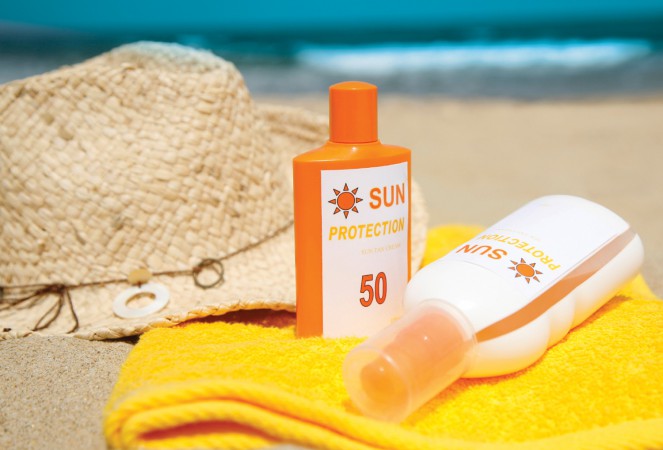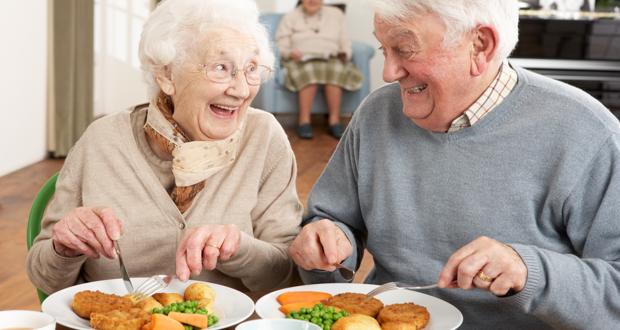Stay sun-safe from head to toe
by Lisa WhitmoreYou won’t read “Wear broad-spectrum SPF 30 DAILY!” here, because by now, you know you should. Still, you may need a reminder of why this habit is so important. Some eye-openers: “Up to 90 percent of skin cancers are associated with UV exposure,” says Elizabeth Hale, MD, a clinical associate professor of dermatology at the NYU Langone Medical Center. One in five Americans will be diagnosed with skin cancer—which includes deadly melanoma—in their lifetimes. Our hassle-free guide is filled with practical tips on keeping every body part safe. To-do: Read, stock up on SPF, rub!
Legs
Women are more likely to develop melanoma on their lower legs and men on their backs, probably because men take off their shirts in summer while women bare their gams. “For everyday, a body lotion with SPF 15 is better than nothing,” says Joshua Zeichner, MD, director of cosmetic and clinical research in the department of dermatology at Mount Sinai Medical Center in New York City. Beach days require an actual sunscreen. Don’t forget your feet—they’re at risk for melanoma too, and very exposed in sandals
Back and arms
These are also prime spots for melanoma. To help them (and every inch of you) stay protected at the beach or pool, slather on SPF at home in the buff, says Dr. Hale; it takes about 15 minutes to sink in. Derms prefer lotion to sprays for the first coat because you get an even layer of coverage. Have your partner or a friend do your back, from the tops of shoulders on down. Rays can still penetrate the fabric of a one-piece, particularly if it’s an older suit that’s wearing thin. If nobody is around to lend a hand, use sunscreen spray with a 360-degree nozzle to reach behind you. Either way, pack a spray for touch-ups every two hours. By law, sunscreens can no longer claim to be sweatproof or waterproof—the truth is, you do sweat them off. And don’t rush the spritz process. Yes, it’s supposed to be quick, but you still need to be thorough. “Hold the nozzle 1 to 2 inches away from skin, spray for one to two seconds per part, then rub it in,” advises Dr. Zeichner. Avoid applying downwind or most of your protection will get blown out to sea.
Neck and chest
“Signs of sun damage show up here early in life, perhaps because the area is more sensitive and often exposed,” says Kevin Cooper, MD, chair of the department of dermatology at University Hospitals Case Medical Center in Cleveland. Cover the entire region with sunscreen, including the sides of your neck. “The area under your ears is particularly susceptible to aging and cancer because it doesn’t have the benefit of the shadow of your chin, which gives the front of your neck some protection,” says Dr. Zeichner. If you’re wearing a ponytail, be sure to smear the back of your neck.
Face
It’s a common spot to develop basal and squamous cell carcinoma, the most prevalent forms of skin cancer. And we hardly need to mention the dark splotches, fine lines and crow’s-feet that come from sun exposure. “Don’t count on your makeup,” cautions Dr. Hale: It may contain SPF, but you probably won’t apply enough to achieve a significant level of protection. Your best bet is a sunscreen that’s lightweight and oil-free, especially if you’re acne-prone. Alternatively, find SPF in a multitasking daily moisturizer. And choose a hat over a baseball cap, which doesn’t cover the sides of the face or ears.
Eyes
If your regular sunscreen brings on redness or tears, try a formula with zinc oxide or titanium dioxide, both of which are unlikely to irritate eyes. Wear sunglasses that block 100 percent of UV rays, the best defense against cataracts and other eye damage caused by rays.
Lips
Your ideal shield: SPF 30 lip balm. If there’s none handy, use a matte lipstick. Avoid glossy lip colors if you’re spending a lot of time outside, notes Dr. Hale: Gloss—even if it has SPF—intensifies the sun and can increase the damaging effects of UV rays like baby oil can.
Scalp and ears
Scarily, skin cancer on areas with little fat is more apt to spread because it penetrates deeper than it would on a fleshier spot, says Dr. Zeichner. “Dip a cotton swab in SPF lotion and paint it on your part and ears,” suggests Francesca Fusco, MD, a dermatologist in New York City. Or use a sunscreen stick. A nice blowout can come in handy: One Australian study showed that hair worn down gives ears substantial coverage.
Know the trouble spots
The average adult has 10 to 40 moles, per the National Cancer Institute. (People with 50 or more are at higher risk of developing melanoma.) While most little brown spots tend to be benign, some can indicate cancer. ID yours here. 
Moles to get checked, stat, are…
– Larger than a pencil eraser
– Scabby, hard or lumpy
– Jagged around the edges
– Uneven in color
– Starting to itch, ooze or bleed (any change merits a doctor’s visit)
Moles that are typically benign are…
– Smaller than 5 millimeters wide
– Rounded or dome-shaped
– Symmetrical
– Consistent in shade
– Unchanging over time
Source: health

















